KINNGAIT, Nunavut — Just 201km shy of the Arctic Circle, in a
hamlet etched into an icescape of rock and snow, a tiny figure clutching worn
colored pencils sprawls atop a huge drawing, her frame half the size of the
paper. Shuvinai Ashoona is putting the finishing touches on her latest work, a
calendar populated by fellow Inuits, an Indigenous people of
Arctic Canada.
Some in parkas are communing with a walrus, some are chewing bubble gum.
اضافة اعلان
The artist,
whose enchanting and enigmatic drawings recently won special mention at the
Venice Biennale, is ensconced in her warm corner of Kinngait Studios, where she
works alongside printmakers and lithographers in one of the most influential
and challenging art-making spaces in the world: an improbable studio-that-could
that has nurtured five generations of acclaimed Inuit artists, many of them
Ashoona’s relatives.
The geographic
isolation of Kinngait (pronounced kin-gite, population 1,400) can be difficult
to fathom. It is about 2,092km north of
Ottawa, on the tip of Baffin Island,
jutting into the frigid Arctic Ocean. The town is part of the vast, largely
Inuit territory of
Nunavut, which has no roads linking other towns — specks on
the tundra hundreds of kilometers apart. Kinngait is reachable by prop plane
flights (at Gulfstream prices) that may or may not show up. Formerly called
Cape Dorset, the town reverted three years ago to its traditional name, which
means “high mountains” in the Inuktitut language.
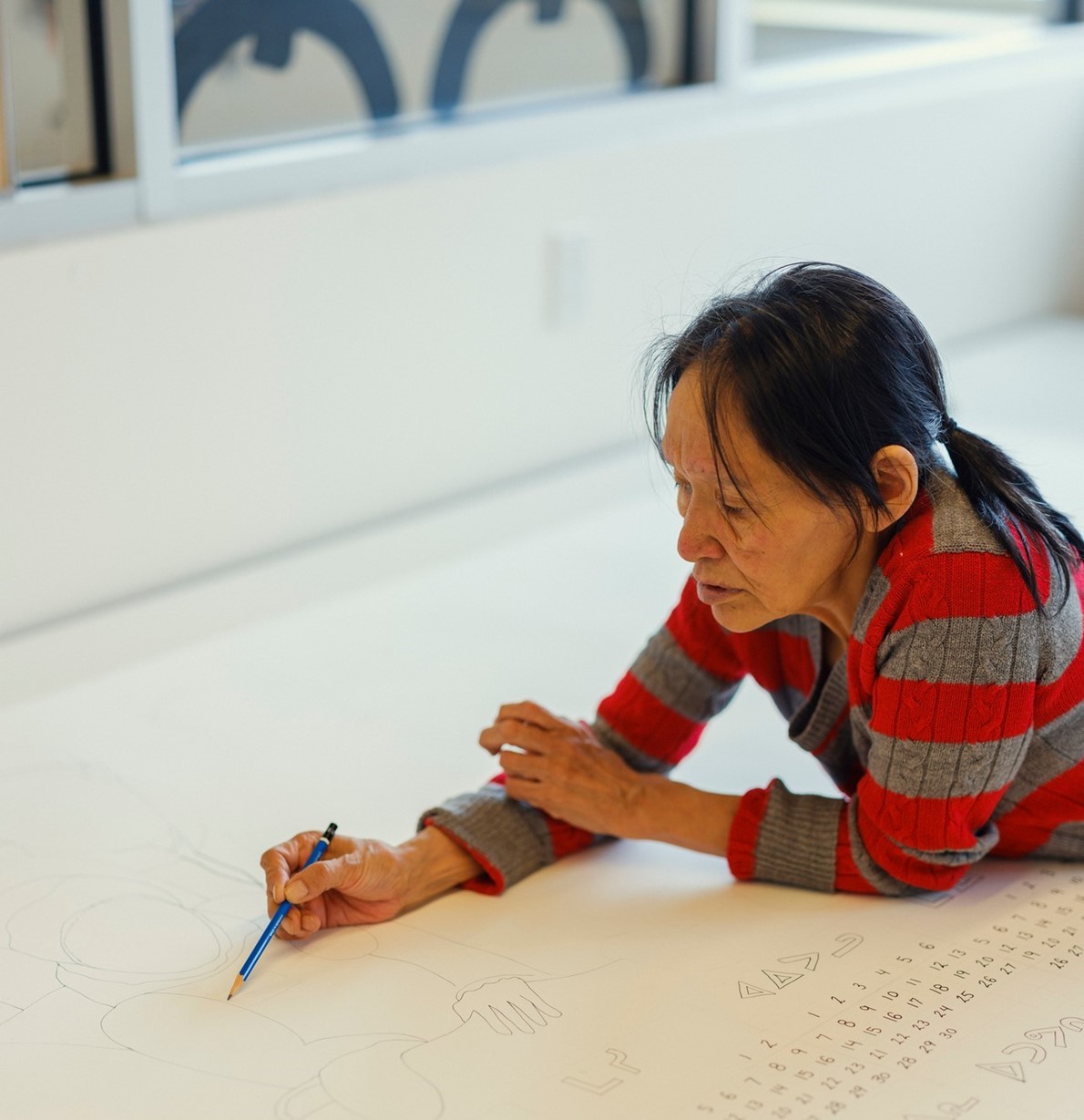
That a place of
significant challenges, from poverty to suicide, has evolved into a “Florence
of the North” is a proud fact of life here. Artists comprise roughly
one-quarter of the community and largely learn by observation, mentored by
elders and family members.
Though the
Biennale’s air-kissing and clinking glasses of prosecco do not exactly jibe
with sealskin mittens and Mukluks, the selection of Ashoona’s drawings for “The
Milk of Dreams,” the Biennale’s central exhibition, was a milestone for her and
for contemporary art.
She is part of a
small group of third and fourth generation artists breaking through
overly-romanticized notions of the Arctic that have defined Inuit art in the
eyes of Westerners. “Shuvinai is pushing the limits on what Inuit art was
assumed to look like,” said Nancy Campbell, a Toronto-based curator who has
exhibited and written extensively about her. “Her bold, fantastical, and often
inexplicable images bridge the Indigenous and non-Indigenous, the traditional
and contemporary, the mythical and historical.”
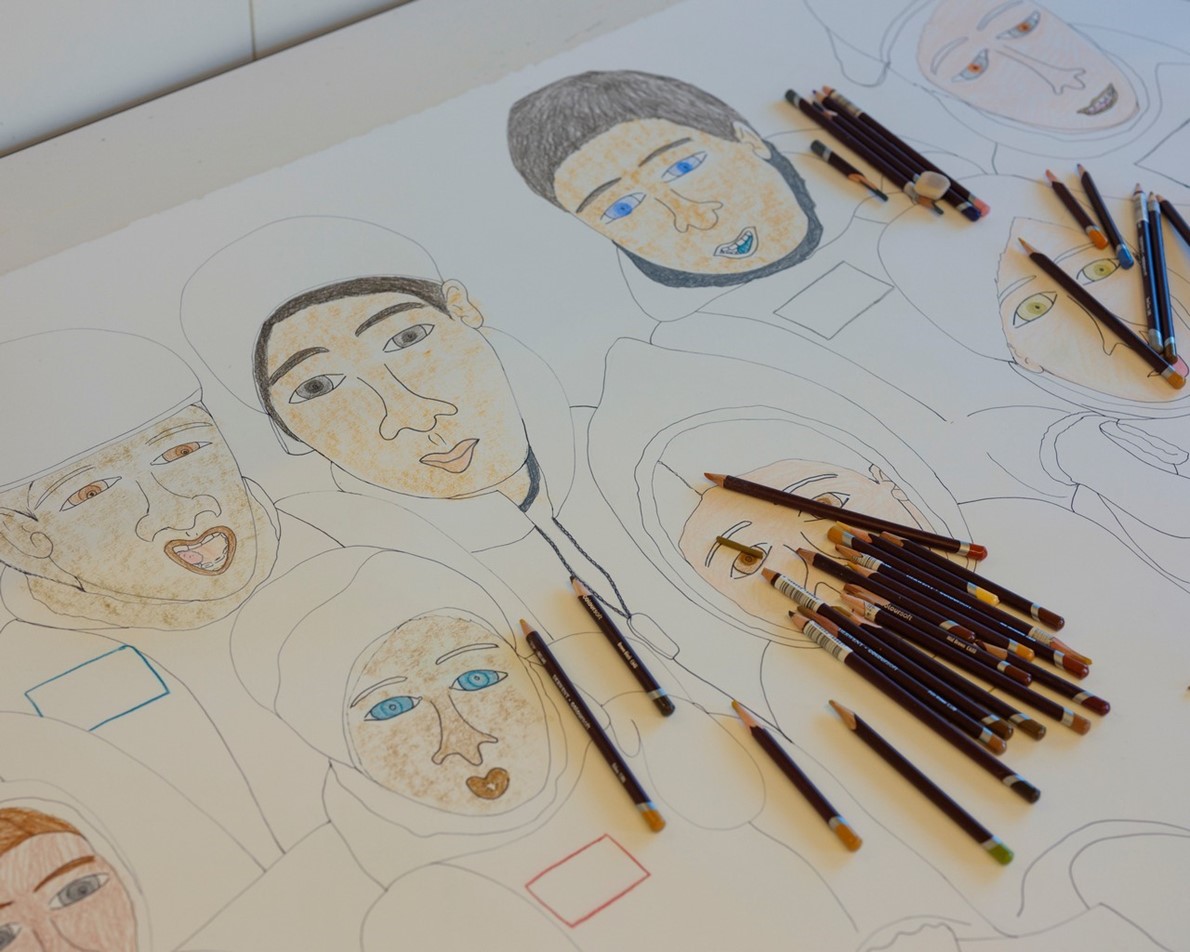
“And it is
capturing the attention of the global art world,” she added, “at a time when
locale and nationality have opened viewers up to seeing art practices that
exist outside the art world norm.”
Ashoona’s
drawings, which the artist describes as “a kingdom with another kingdom under
that,” are in the permanent collections of the National Gallery of Canada;
Qaumajuq, the new Inuit museum at the Winnipeg Art Gallery, and the Smithsonian
Institution’s National Museum of the American Indian.
Her richly
detailed artistic universe, while rooted in her home terrain, ventures far
beyond it, merging the spirit world and the pop culture worlds. In her singular
imaginings, mermaids swim up to watch TV news about their planet, ships play
tag with giant squid, and humans get up close and personal with a purple
narwhal with blue wings.
In a 2021
drawing now in Venice, a bright orange octopus stretches its tentacles in
yogalike fashion and a perky three-headed monster holds hands with an Inuit
family. (“They didn’t mention where they were going,” Ashoona said jokingly).
“Surrealism” is a term used to describe her works
“because that’s what makes sense in a non-Native world,” said Wanda Nanibush,
an Anishabee curator of Indigenous art at the Art Gallery of Ontario in
Toronto.
An
unconventional life ‘on the land’
Now 60, Ashoona is the eldest of 14 children, three of whom died at
birth. Her unconventional upbringing embraced television and horror films in
Kinngait but also the traditional life “on the land.”
During her early 20s, she and her family spent a
decade in a remote outpost camp, a still-vivid interlude that informs her work.
She placed rock traps in rivers to “grab fish with knitted mitts,” she says,
and gathered wild mushrooms and blueberries in the mountains. The family ate
what are known as “country foods” that are hunted, fished, or foraged.
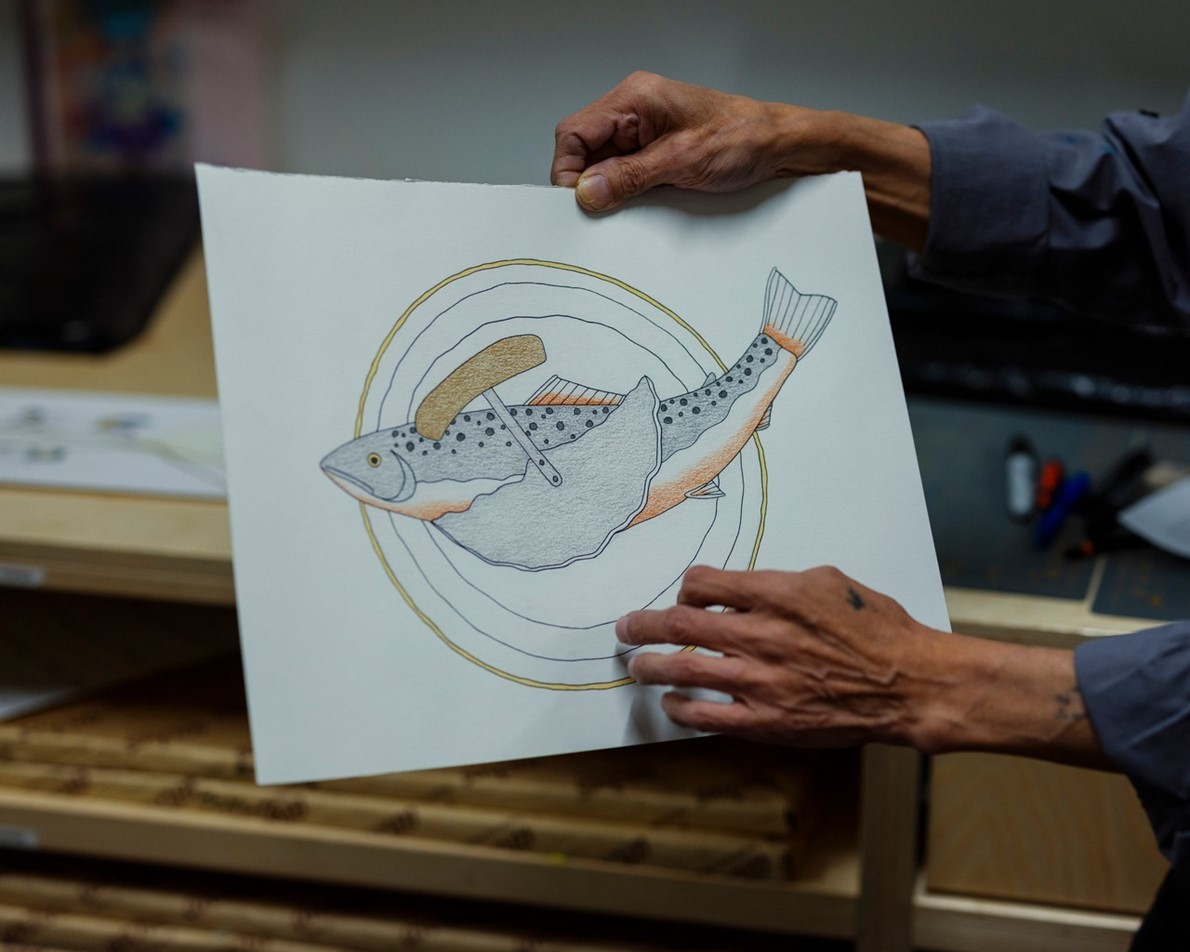
In high school,
she became pregnant and gave birth to a daughter, Mary, with whom she is close.
At around age 30, Ashoona experienced a physical and mental health crisis, in
an era when counseling and other support services were rare. She struggled with
painful headaches, whispering to them to “get out from the person you’re in.”
Her conversations can sometimes be difficult to track, leaping from chocolate
to escalators to the fate of the “Big I-Pod,” as she calls the Earth. “I
believe what she sees in her mind, she puts on paper,” said Chris Pudlat, Sr.,
who worked with her at Kinngait Studios.
Goota Ashoona, a
renowned sculptor now living in Winnipeg, was deeply worried about her beloved
older sister and suggested that art might help Shuvinai be independent and
support her yen for soda and cigarettes. The structure and camaraderie of the
studio have been a safe haven. “The pencil and paper make me think better a
lot,” Shuvinai Ashoona observed in a 2010 short documentary “Ghost Noise.” “It
probably helps me, like aspirin.”
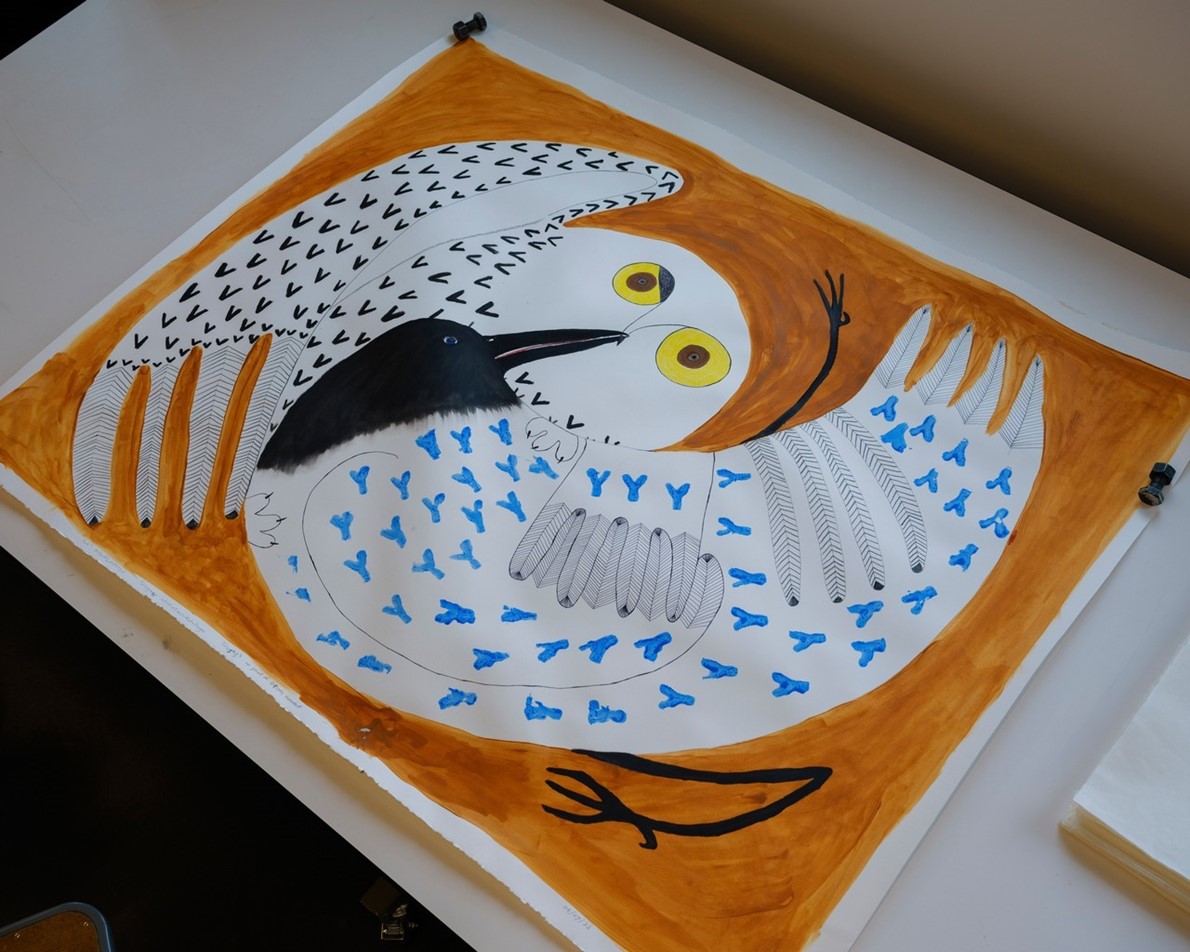
Jimmy Manning
was the manager of Kinngait when Shuvinai Ashoona arrived in the mid-1990s. The
studios were in cottages known as “512”s (512-square-foot government housing).
“She started right away moving from regular-size paper to big,” he recalls. “Oh
my God, she had some kind of energy that we didn’t have.”
She possessed
the gene: Her grandmother Pitseolak Ashoona, was a pivotal figure in the Cape
Dorset art world. Her family traveled between seasonal camps by dog-sled and
sealskin boat, and lived in snow houses, or igloos. When her husband, a fur
trapper and hunter, died in an epidemic, leaving the family close to
starvation, she and her children settled near Cape Dorset, founded as a trading
post for the Hudson’s Bay Co.
Entirely
self-taught, Pitseolak Ashoona providentially connected with James Houston, an
artist, writer, government field officer, and Indiana-Jones-style swashbuckler.
Houston inadvertently “discovered” Inuit art when a man ran up to him with a
clenched fist, which Houston assumed would lead to “a punch in the nose,” but
revealed an exquisite contemporary carving, he recalled in a book of his
exploits from 1948 to 1962, “Confessions of an Igloo Dweller.”
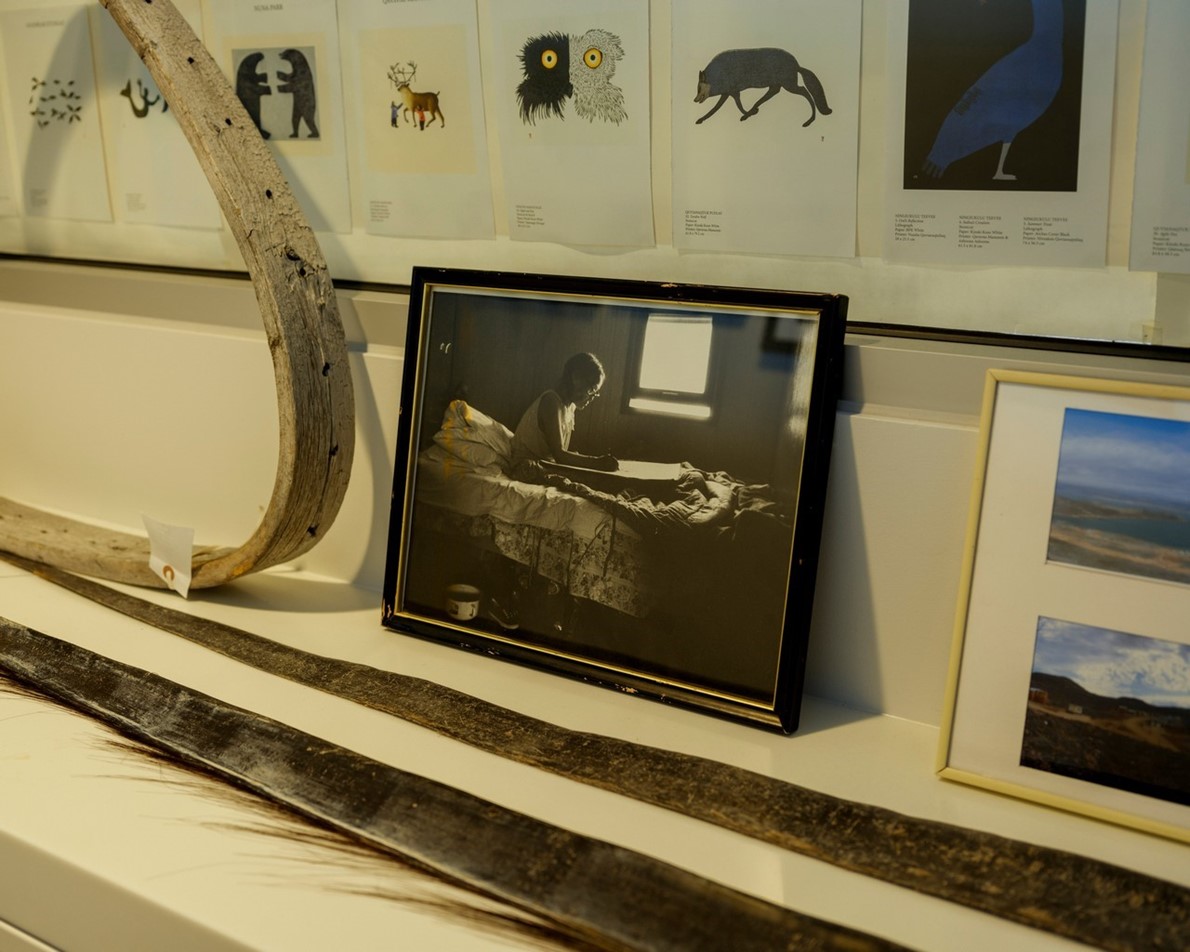
Houston
proselytized for Inuit art, bringing it to international museum audiences and
founding what would become Kinngait Studios. He hit upon limited-edition prints
as a way to translate Inuit motifs into marketable art. Pitseolak Ashoona was
an early star, producing more than 8,000 drawings on the “old ways” she grew up
with, making prints in widowhood. “If no one tells me to stop, I shall make
them as long as I am well,” she wrote.
Read more Culture and Arts
Jordan News




